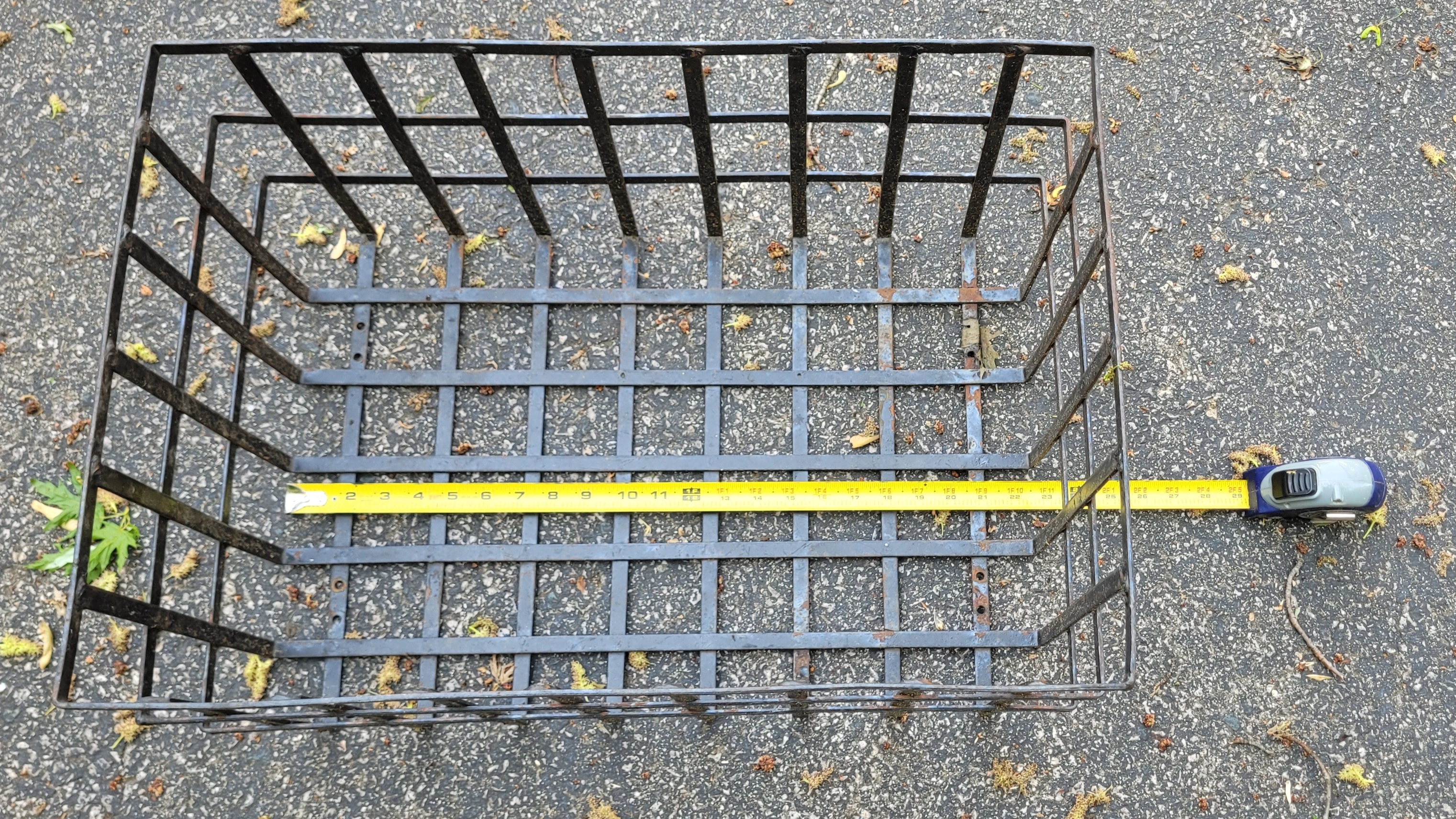I’ve been riding the same Gary Fisher Hoo Koo E Koo Mountain Bike since my uncle found it in a sandpit and gave it to me to ride while away on my first internship. It was in somewhat rough shape back then, and it’s kind of the bicycle of Thesius at this point as parts failed and I found ways to replace them.
I was replacing the front tire and realized I’d like to make this thing into a cargo bike (I currently use it to scout for furniture to restore on trash days, but usually have to ride home and return on foot to grab anything I find, plus I could get groceries). I’m not sure what level of standardization this bike follows and I have no familiarity with cargo bike parts, but I was thinking I’d like to add a Rear Pannier Carrier Cargo Rack and perhaps a large basket on top of that - in fact, I happen to have this homemade welded steel basket I pulled out of a dumpster a couple years ago:

It’s 23" long, 12" tall, and 16" wide. I could weld on whatever mounting hardware it needs.
So basically I’m looking for advice on layout and things to add, specific parts if you have any recommendations, is that basket a horrible idea, etc. What traits make for a useful cargo bike, what would work well with this old mountain bike? And thank you for any ideas!!


The bike has rear mounting points but the type of bike racks that seem to be designed to use them claim lower weight limits. There are others that wrap around the seat post and rear fork.
Like this one claims to be able to support 310lbs
Would the frame of the bike and the wheel able to take that? Is the weight made up?
I’d think the limiting factor most mounts would be the seat stays on any given bike. Mounting to the seat frame could take some of the pressure off, but even so, 310 lbs seems wildly optimistic because don’t forget: The whole bike has to support you, your cargo, and all the extra parts/bags. The wheels themselves also have a weight limit and with a loaded down bike with a bigger rider, you could easily get into 500lb+ territory.
The seatpost rack would probably be OK, just don’t try to load it down with more than a fraction of that 310 lbs (if not for structural reasons, then for practical ones). Bike trailers are another option for expanding capacity without adding more wear and tear to the bike itself (just be extra careful with how you load it up, putting weight on the wrong spot can make handling increasingly difficult - the general rule is to place 60% of the weight in front of the axle and 40% behind which applies to bike trailers and vehicle trailers alike).
Another important thing to do is make sure you have good brakes: That’s very important, but even more-so when you’re using a cargo bike. If your rim brakes aren’t up to snuff, consider upgrading the pags to Koolstop salmons, they’re very well regarded and new pads aren’t a big investment. Make sure that your braking system as a whole is up to snuff/in good repair because the more weight you carry, the sketchier stopping can get.
deleted by creator
Thanks! I’ll start slow with adding weight and I’ll look at better brake pads next, to help deal with it. I had to modify the rack a little so it’s wrapped around the seat stays at three points, and where it gets crowded with the rear derailer cable and it’s attachments, I modified the back right post to use a longer rod so I could attach it to the little bolt above the gears the way the bike designers intended. Not sure what that does, if anything, to it’s weight capacity but I’ll be careful.